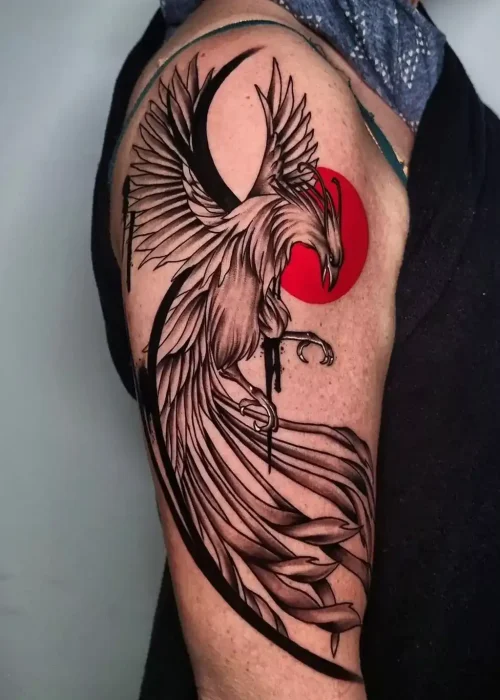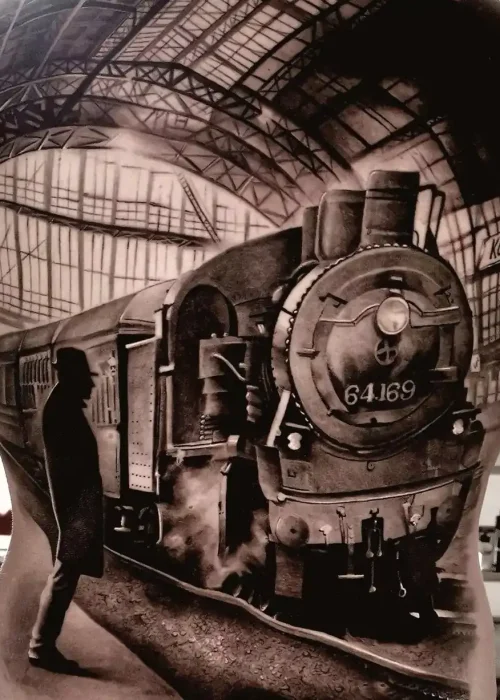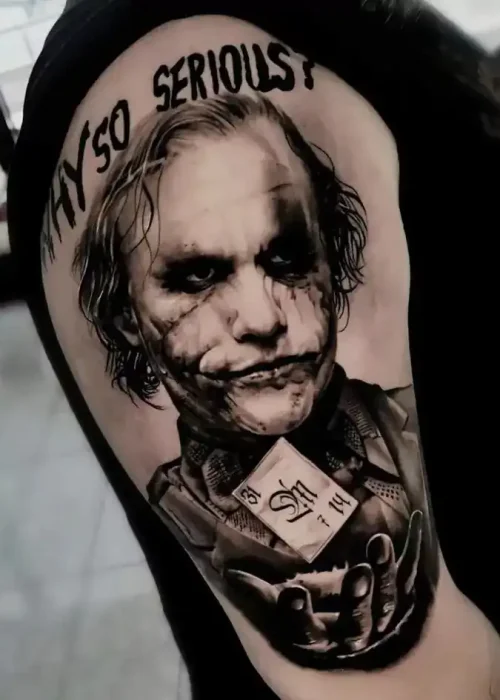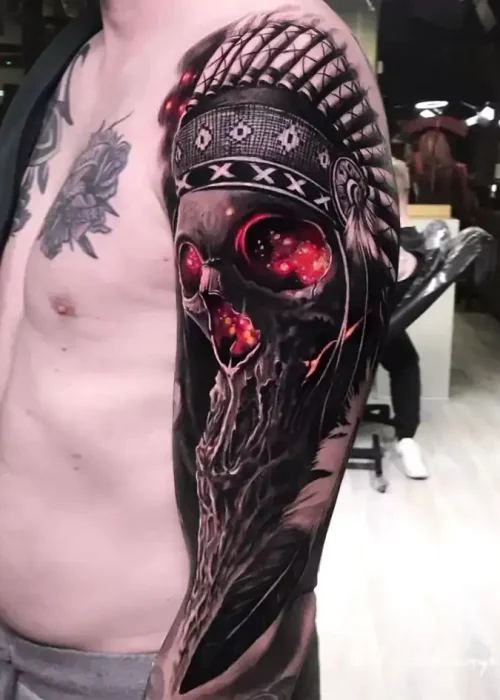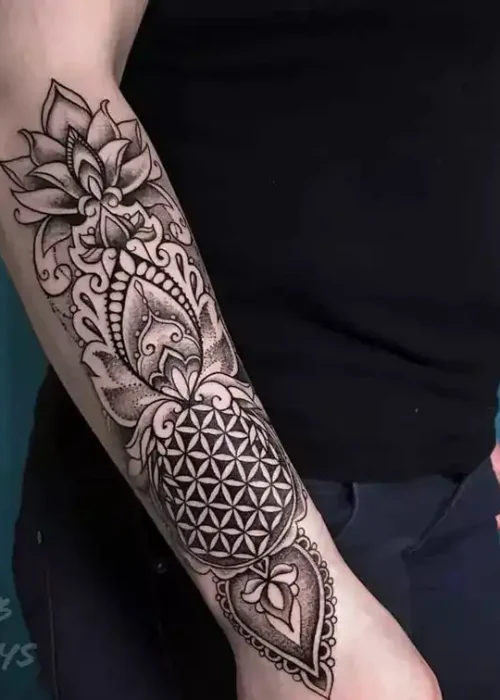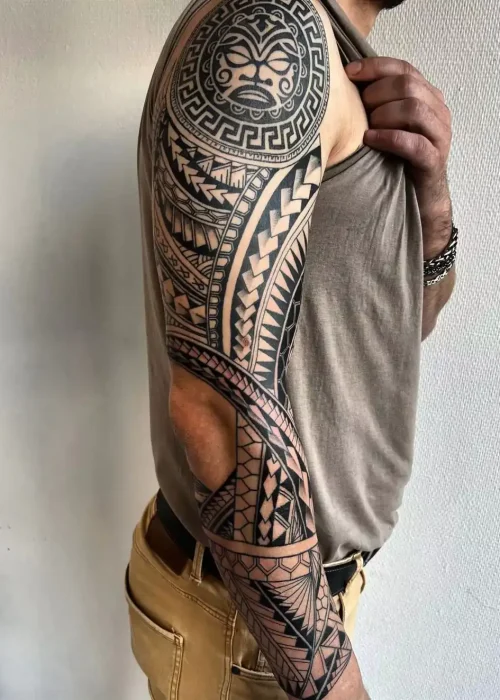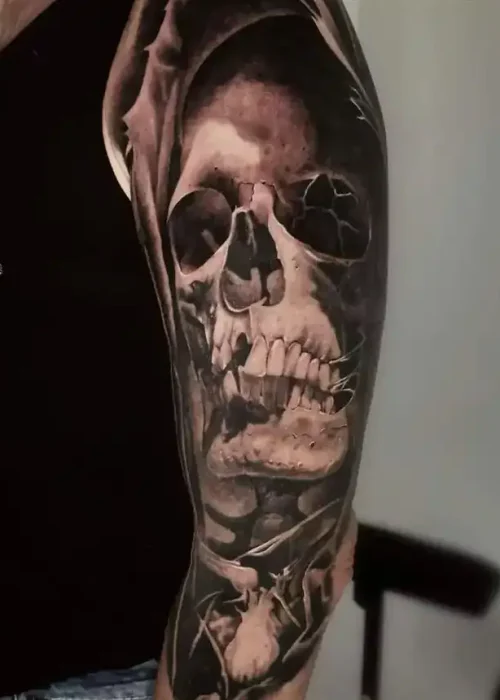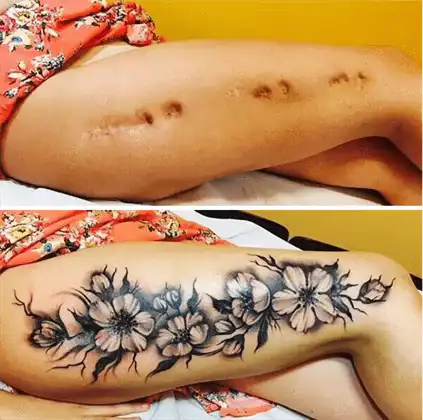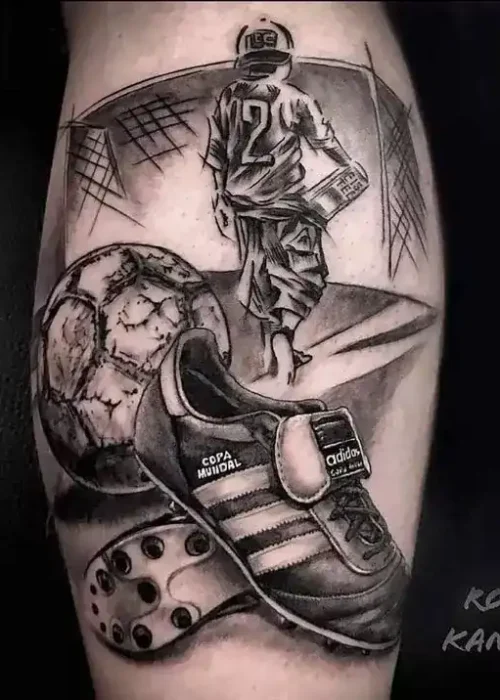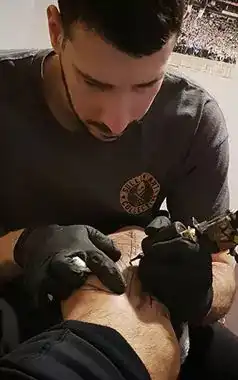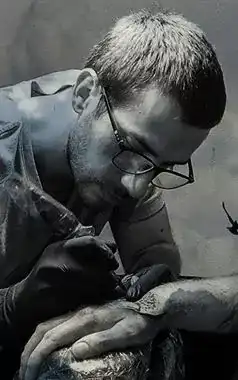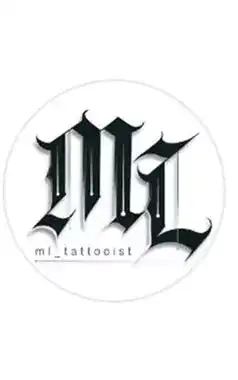Tattoo types – meanings and origins
Tattoos are a multifaceted form of body art practised in cultures around the world. They often carry profound symbolic meanings and have a rich history. Here are some of the most popular tattoo types, their meanings and origins:
Traditional tattoos
Biomechanical traditional tattoos, also known as old school tattoos, are inspired by maritime and military traditions. They often symbolise a spirit of adventure, courage and dedication.
Origin: This type of tattoo originated in the 18th and 19th centuries in the USA and Europe and was popular with sailors and soldiers.
Tribal tattoos
Meaning : Tribal tattoos represent cultural roots and membership of a particular ethnic group. The meanings vary depending on the tribe and design.
Origin: Originally worn by indigenous peoples in Africa, Polynesia and other regions, tribal tattoos have gained popularity worldwide.
Flower tattoos
Meaning: Flower tattoos can symbolise love, beauty, growth, transience or personal memories. Each flower has its own meaning.
Origin: Flower motifs in tattoos have a long history in various cultures, including the Japanese cherry blossom and the Mexican Day of the Dead flower.
Animal tattoos
Meaning: Animal tattoos can symbolise strength, freedom, wisdom or spiritual connection. Different animals have different symbolic meanings.
Origin: Animal motifs have been revered in many cultures as protective symbols or totem animals.
Lettering tattoos
Meaning: Script tattoos can bear words, quotes or names and often have personal meanings for the wearer. They can also convey spiritual messages.
Origin: Written tattoos have a long history in various cultures, from ancient hieroglyphics to modern scripts.
Realistic tattoos
Meaning : These tattoos are known for their lifelike depictions of portraits, nature or other subjects and often represent a love of art and attention to detail.
Origin: Realistic tattoos are a modern development in the art of tattooing and became possible with advances in technology and equipment.
Maori tattoos (Ta Moko)
Meaning : Maori tattoos are deeply connected with the identity and culture of the Maori in New Zealand. They often represent social status, heritage and life history.
Origin: The Maori tradition of tattooing, called Ta Moko, dates back over a thousand years and has deep spiritual significance.
Watercolour tattoos
Meaning : These tattoos are characterised by vibrant colours and flowing shapes. They can represent the joy of life and the diversity of emotions.
Origin: Watercolour tattoos are a modern development in the art of tattooing and represent artists’ love of experimentation.
Geometric tattoos
Meaning: Geometric tattoos use clean lines and shapes to represent symmetry and balance. They can symbolise spiritual concepts or personal order.
Origin: Geometric patterns are found in many ancient cultures and are used in modern tattoos as an expression of precision and harmony.
Biomechanical tattoos
Meaning: These tattoos combine organic elements with mechanical details and often symbolise the connection between humans and technology.
Origin: Biomechanical tattoo art became popular in the 1980s and was inspired by science fiction and cyberpunk.
Portrait tattoos
Meaning: Portrait tattoos are realistic depictions of people and can represent loved ones, idols or historical figures.
Origin: The tradition of applying portraits to the skin dates back to antiquity and was revitalised during the Renaissance.
Body sites for tattoos:
The choice of body part for a tattoo can add to the meaning. Here are some common body parts for tattoos:
- Arms and legs: Popular areas for large tattoos such as sleeves and leg tattoos.
- Chest and back: Complex designs and portraits can be engraved here.
- Neck and head: These areas are more suitable for smaller, subtle tattoos.
- Wrist and ankles: Favourite areas for lettering tattoos and small symbols.
- Back and stomach: Large, expressive tattoos can be realised here.
- Face and hands: These areas are often reserved for subcultural tattoos and should be carefully considered.
Tattoos are a unique form of self-expression and can create a profound connection to the wearer’s history, culture and personality. When choosing a tattoo, you should always consider your personal preferences and the meaning behind it to ensure that it has a special and lasting meaning for you.
Fine Line Tattoos
Meaning: Fine line tattoos are known for their fine, detailed lines and delicate designs. They can symbolise elegance, delicacy and precision.
Origin: This tattoo style has its roots in the tattoo art of the 1960s and has since become a popular choice for minimalist and subtle tattoos.
Blackwork tattoos
Meaning: Blackwork tattoos are characterised by their use of strong, black colours and abstract patterns. They can represent strength, independence and contrast.
Origin: Blackwork has its roots in various cultures, including Maori Ta Moko and Polynesian Tatau, and has developed into a tattoo form in its own right.
Dotwork tattoos
Meaning: Dotwork tattoos are made up of tiny dots that are joined together to create complex patterns. They can symbolise spirituality, patience and unity.
Origin: Dotwork has its origins in the indigenous tattoo traditions of South Asia and Oceania and is now practised by artists all over the world.
Viking tattoos
Meaning: Viking tattoos are inspired by Norse mythology, warriors and symbols. They can represent strength, courage and honourable principles.
Origin: The Nordic tattoo tradition dates back to the Viking Age and was practised by the ancient Germanic tribes. These tattoos have a rich cultural meaning.
Sacred tattoos
Meaning: Sacred tattoos refer to religious or spiritual motifs and symbols. They can express faith, spirituality and devotion.
Origin: Sacred tattoos have a long history in many cultures and were often worn as an expression of faith or membership of a particular religious group.
Trash Polka Tattoos
Meaning: Trash polka tattoos are characterised by their chaotic, high-contrast designs and can represent conflict, chaos and the duality of life.
Origin: This modern tattoo art was developed in Germany in the 2000s and is a mixture of realism and abstraction.
Watercolour tattoos
Meaning: Watercolour tattoos use vibrant colours and flowing shapes to express emotion, freedom and individuality.
Origin: This modern tattoo style has evolved from watercolour painting and allows artists to create creative and unique designs.
Pointillism tattoos
Meaning : Pointillism tattoos use small dots to create realistic or abstract images. They can represent patience, precision and a love of art.
Origin: Pointillism has its roots in 19th century painting and was characterised by artists such as Georges Seurat.


